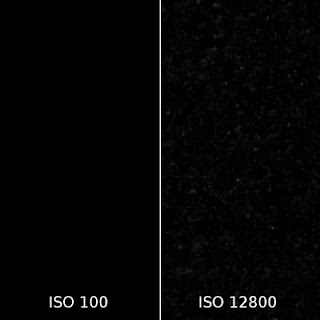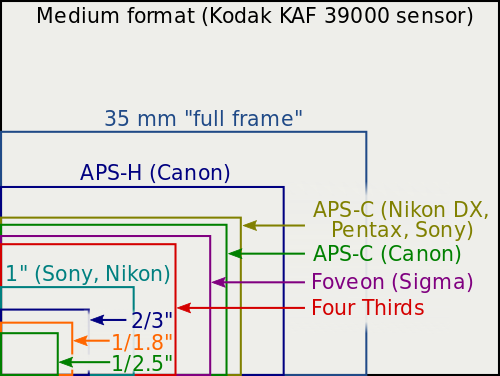The image sensor is the little rectangle in your digital camera that records all the light coming through the lens so that the camera can turn it into the image you save on your computer. The image sensor is the digital equivalent of film. The image sensor is made up of millions of photosites: individual sensors that each record the amount of light hitting it. Each pixel in your image represents the light readings from four photosites: one red, one blue, and two green (the human eye is most sensitive to green, so it gets more photosites). An image sensor is made up of photosites just like a monitor is made up of pixels. But how does this make a difference in image quality?
When you take a picture, the shutter is open for a certain amount of time -- say 1/100 of a second, for example. During that time, a certain number of photons (little particles of light) will strike each photosite. The brighter an object is, the more light it emits or reflects, and the more photons it sends to your image sensor. The longer your shutter is open, the more photons will hit the sensor. The more photons, the brighter the pixel value.
When an image is too dark to make a good images, you can compensate for that by increasing the ISO setting on your camera. This basically just multiplies the number of photons that have been recorded by each photosite. If you double your ISO, thereby multiplying the photon count by two, you would think that would have the same effect as doubling the shutter length, wouldn't you? Well, not quite.
 |
| Inside of my lens cap, magnified 4x |
Photons hitting an image sensor work in the same way. Given a long enough shutter duration, the number of photos hitting adjacent photosites eventually evens out. For shorter durations, there can be quite a large variance in photons. If you simply multiple those values, the difference will become even larger. This variation in photon counts (pixel values) is seen as noise. When a high ISO multiplies the photon counts by a large amount, you get large variations that most people know as "high ISO noise."
Take this one-dimensional example in the graphs below. In the first image, the very narrow samples range in value from 16 to 175. However, if those values are averaged together by combining the four adjacent values into one, as in the second image, the range is now only 53 to 107. It's obvious from this example that averaging the values into larger buckets produces a much more consistent set of values.
So now you know what causes high ISO noise. But how does the image sensor size affect this?
 |
| Image courtesy Wikipedia. Click to view diagram at twice life size. |
Let's stick with our raindrop analogy. Imagine if you walked out into a rain shower with a cookie sheet full of upright test tubes, each only about 1/2" in diameter. After ten minutes in the rain, some of those tubes will have caught quite a bit of water, while other tubes will catch only a few drops. That's a lot of variation between adjacent containers, just like we saw in the first noise diagram above.
Now wring out your shirt and go back out for another ten minutes, this time with a cookie sheet full of coffee mugs, each about 3" in diameter. Because each cup covers a much larger area, relative to the size of each raindrop, over the course of ten minutes, the number of drops caught by each cup will average out to very similar values. This is what we saw in the second noise diagram above.
Image sensors work the same way. Larger photosites will collect light with less variation than smaller photosites. Less variation means less noise, especially at higher ISO's. In dark environments that require higher ISO's, point and shoot cameras simply can't hold a candle to full frame DSLR's. In fact, lower pixel counts is one reason why Nikon DSLR's have recently been able to produce cleaner high-ISO images than do their Canon counterparts.
Yes, there are several other factors that affect image quality, including lens quality, sensor design, noise reduction algorithms, etc. But the size of each pixel is one of the most significant contributors.
So, the next time you're in the market for a point & shoot camera, resist the urge to buy one with the highest pixel count you can find. With all other features (like lenses) being equal, unless you only shoot in bright sunlight, you'll get better looking photos from an 8MP camera than you will from a 14MP camera.
We'll learn more about ISO settings in all their glory in an upcoming post.
Always, I'd love to hear your questions or thoughts on the matter in the comment section below.




No comments:
Post a Comment
Please leave your comment below. Comments are moderated, so don't be alarmed if your note doesn't appear immediately. Also, please don't use my blog to advertise your own web site unless it's related to the discussion at hand.